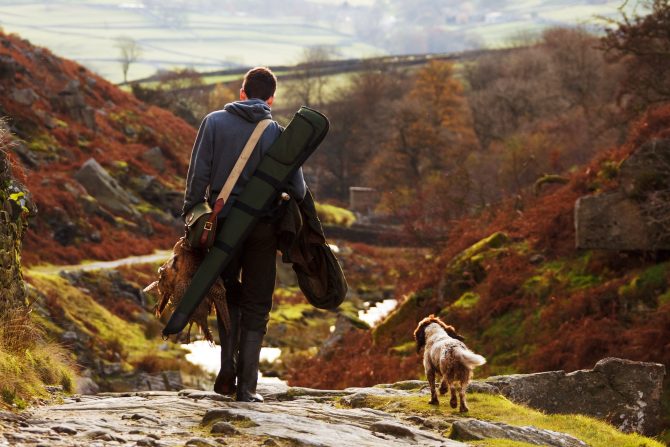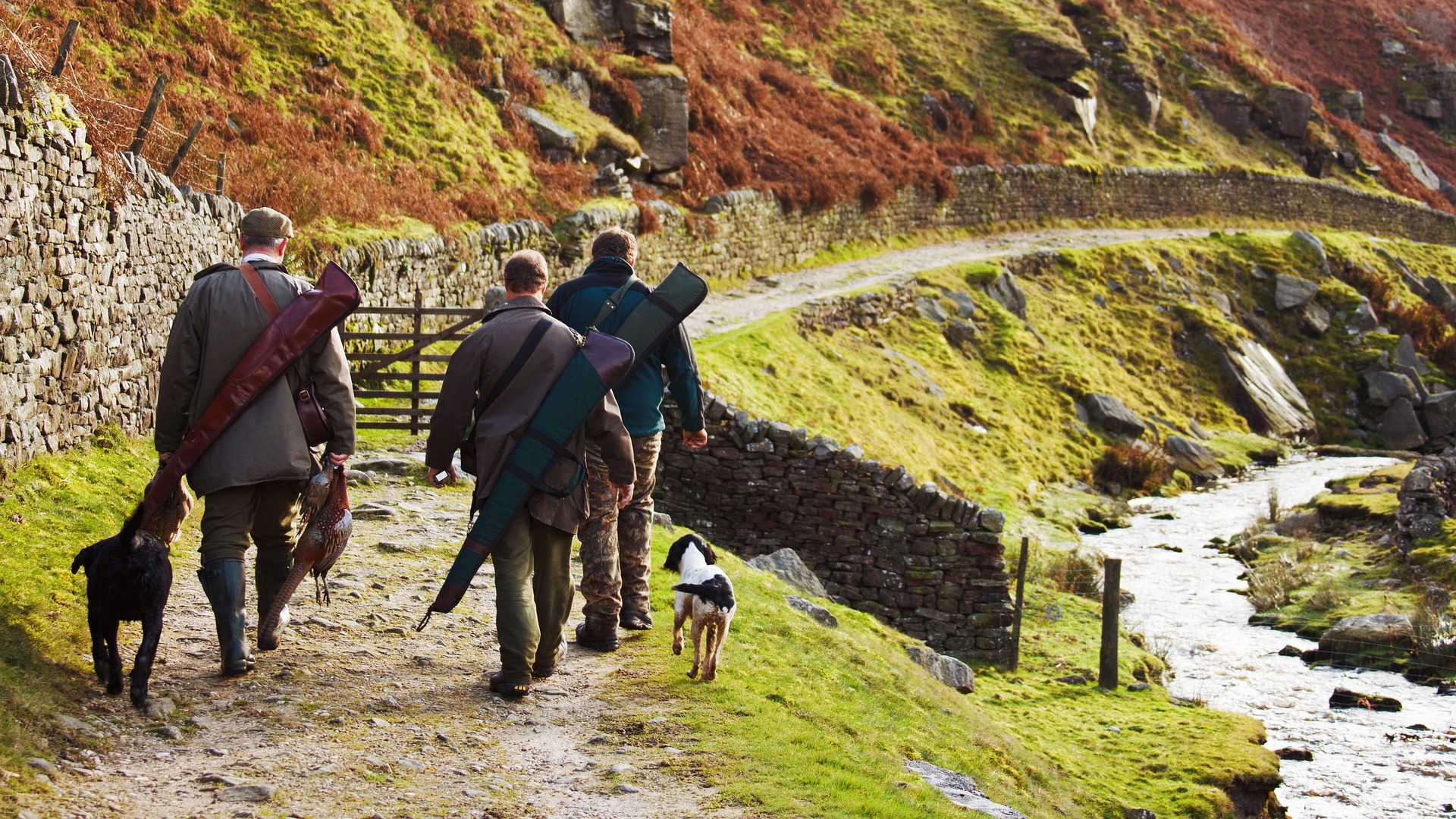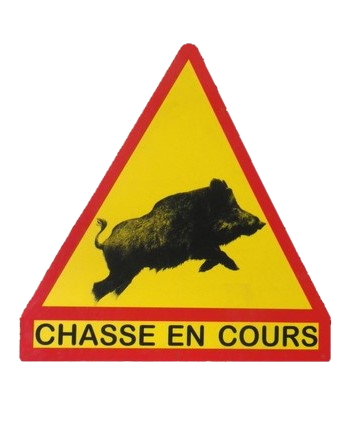La Chasse/Hunting in France: A Practical Guide (Part 2/2)
Essential Reading


This second article in the two-part hunting series offers no political or subjective opinion. It provides information and practical guidance to anyone interested in hunting in France.
Hunting as a Heritage
Hunting has been part of France’s heritage for as long as anyone can remember. Literature on the subject is extensive, from the notable work published in the Middle Ages by Gaston Phoebus, to contemporary times, by celebrated authors such as the Marquis de Foudras, Alphonse Daudet and Louis Pergaud.
Hunting themes are expressed through other media such as tapestry, stained glass, tableware and decoration. Pictorial art, too, with celebrated artists like Eugene Delacroix, who created hunting-inspired works. Hunting undoubtedly forms part of the country’s cultural fabric.
Hunting and its Wider Role in the Rural Community
Today, France, with its vast tranches of the countryside, is the EU’s leading agriculture nation. The hunting fraternity forms part of community life, contributing to village and Mairie-run events. Hunting associations, such as the Associations Communales de Chasse Agréées (ACCAs) discussed in article 1, organise hunting in the locality, and hunters, through their subs, contribute to municipal budgets. There is an estimated 1 billion euros linked to rural tourism from hunting.
Hunters and the ecosystem
As part of the July 2019 hunting reforms, which strengthened actions for biodiversity and nature education, an eco-contribution was agreed. Each hunter pays €5 on their licence to finance activities supporting biodiversity, which the government matches.
The hunting community is also involved in the management of the ecosystem:
- Wetlands and ponds are a key element in the ecosystem, 75% of which are managed by hunters.
- More than 20,000 km of hedgerows are planted and maintained each year by hunters.
- 40,000 hectares of fallow land are set aside each year by hunters to protect insects and especially bees.
- Over the years, 800,000 km of rural roads/trails have disappeared. In collaboration with regional councils, hunters have launched significant restoration projects to benefit all nature lovers.
Biodiversity
The Fédération Départementale des Chasseurs (FDC) (present in each department) educates and works to protect the environment. In addition to developing and restoring territories, the hunting community is involved in other actions designed to preserve biodiversity.
More than 500,000 volunteer hunters carry out field activities, including:
- Ringing birds to improve species knowledge.
- Regulation of invasive species that create damage and carry diseases, such as leptospirosis.
- Radio-tracking wildlife for biometric or genetic studies.
- Maintaining wildlife crossings on major road and rail infrastructure.
- Safeguarding and creating bio corridors/bridges to avoid the division of territories.
- Providing food and water aid to species in critical times.
- Studying and following migratory species to improve knowledge of migratory routes.
- Estimating the evolution of animal populations using seasonal counts.
- Annually collecting waste in the countryside and forests.
- Working for a positive balance between agriculture/forestry/hunting.
Each year 15 million euros are invested by hunters to safeguard biodiversity.
“We are convinced that it is our field experience that makes the difference and that makes us the best placed to help local authorities preserve biodiversity.”
Willy Schraen, President of the FNC
What Species Can I Hunt in France?
(NB Fishing is not covered in this article.)
Under specific conditions, more than 91 species can be hunted in France. They broadly fall into the following categories:
- Small game, e.g. pheasants, rabbits, hares and partridges
- Waterfowl, e.g. mallard ducks, coots, gadwalls
- Corvids, e.g. rooks, carrion crows, jays
- Shorebirds, e.g. red godwit, oystercatcher, common snipe
- Birds of passage, e.g. rock doves, wood pigeons, woodcock
- Land predators, e.g. fox, weasel, mink
- Big Game, e.g. wild boar, deer, mouflon
- Small Mountain Game, e.g. Capercaillie, rock ptarmigan, mountain hare
- Others, e.g. Muntjac, coypu, badger
Click on this link for the complete list.

What Methods Are Used for Hunting in France?
Hunting is primarily organised through the Fédération Nationale des Chasseurs (FNC) (see article 1) and locally through hunting associations. The following are the most popular hunting techniques:
- La battue – Driven hunt
La battue involves hounds being released in a zone where grand gibier (big game), usually wild boar or deer, are present. The idea is for the hounds and ‘beaters’ (hunters who follow the pack in alignment) to flush game towards and across a line of waiting shooters.
- Chasse au traqueur/à l’approche – Stalking
This hunting technique is characterised by the observance and covertly stalking of game, often over rugged terrain incompatible with la battue. If executed correctly, the target animal will have no awareness of the hunter’s presence. The species most commonly hunted using this technique is deer.
- Chasse à l’affût – Hunting from a lookout/blind
This is undertaken from a static hide on the ground or in a mirador (watchtower). Like stalking, if executed correctly, the prey will not know the hunter’s presence.
- Chasse à la sauvagine – Waterfowl hunting
This method includes different techniques depending on the game and location, e.g. marsh, lake, pond. Hunters should be well camouflaged and may construct rough blinds either on or beside the water. Decoys are often used, and hunters may flush out game or hunt during the birds’ overhead passage. Retriever dog breeds are generally used for this form of hunting.
- La chasse de petit gibier – Small game/Rough hunting
Pointers, setters and sighthound breeds often team up with the hunter for this technique, which primarily concerns the hunting of small species, e.g. partridge, pheasant, rabbit, hare.
The dog will instinctively stop and point its head towards game. This shows the hunter the location of their quarry and allows them to move into gun range, so the game is flushed. Once the animal is despatched, the dog retrieves the quarry.
- La chasse à courre – Hunting with hounds on horseback
Similar to fox hunting in the UK and fox chasing in the US, la chasse à courre (also called venery) was formerly reserved for the nobility. Today, this form of hunting is practised by many. Hunting with hounds involves hunting a wild animal with a pack of hounds. The game choice is traditionally roe deer, hare, fox, wild boar or stag.
- La Chasse à l’arc – Bow hunting
A purist discipline, bow hunting follows traditional hunting techniques with modern equipment. Bow hunting requires a detailed analysis of the tracks and territory and stealth skills to reach a sufficiently close shooting position.
For further information on the different hunting techniques, click on this link.
Purchase and Possession of Firearms in France
In France, there are 2 million legal users of firearms (hunters, sport shooters, clay pigeon/skeet shooting, collectors), and 1.1 million hunters own 2.1 million guns. Six organisations are concerned with the regulation of arms:
- National Federation of Hunters
- French Shooting Federation
- French Ball Trap Federation
- National Association for the Defence of Amateur Shooters and Weapons Collectors
- National Trade Union Chamber of Professional Gunsmiths
- National Trade Union Chamber of Manufacturers and Distributors of Arms, Ammunition, Equipment and Accessories for Hunting and Sport Shooting
There are specific regulations concerning:
- The weapons a hunter can acquire
- Firearms acquisition
- Possession
- Transport
- The carrying of weapons
What Firearms Can I Use for Hunting?
Your choice of firearm will depend on the type of game you wish to hunt. Generally, shotguns are used for bird hunting, rifles for small and large game. Bows may also be used, as discussed below.
A legally accepted hunting weapon is defined as a long gun whose total length is greater than 80cm, and the length of the barrel is greater than 45 or 60 cm, depending on the mechanism. Hunting weapons are divided between rifled barrel weapons and smooth barrel weapons, but some are mixed (smooth barrel and rifled barrel).
The ammunition feed system can be a manual repeater with a magazine capacity not exceeding 11 rounds (10 + 1 in the chamber) or a non-removable semi-automatic repeater limited to 3 rounds (2 + 1 in the chamber).
Click on this link government link for further detail.
Click on this link for the list and explanations of prohibited firearms for hunting.
For further information on each regulation, click on this link.
How Do I Gain Authorisation to Hunt in France?
Hunting Permits for French Residents/Citizens
In France, hunting is conditional on obtaining a permis de chasser (hunting permit). The relevant legislation is defined by article L423-1 of the Environment Code. If you are a French resident/citizen, the permit will only be issued after you have undergone training and successfully passed the examen de chasse. This is issued by the Office français de la biodiversité, the French Office for Biodiversity (OFB).
Once passed, the permis de chasser is a permanent document (subject to the conditions noted below). Its continued validation is the payment (different fees exist depending on the period (s) you wish to hunt) of an annual membership fee plus a royalty and stamp duty to the FDC, of which you must be a member.
If you wish to hunt big game, an additional fee may be required to contribute to the compensation system for damage caused by any particular species.
Follow this government link for further detail regarding the right to hunt and examinations:
As a Non-resident, Can I Hunt in France?
Yes, if you are a non-resident wishing to hunt in France, you must hold a valid hunting licence/firearms authorisation issued by your own country and have relevant insurance. If you want to travel with a hunting dog, you must also ensure that it has the correct passport documents.
Click on these links here and here for further information.
Hunting Licence Preclusions
You cannot:
- *be under sixteen
- be under guardianship unless authorised by the guardianship judge
- be deprived of the right to bear arms
- have been convicted of a hunting offence and possess previous convictions (rights listed in article 131-26 of the penal code)
- have been sentenced to imprisonment for more than six months for rebellion or violence against agents of public authority
- be prohibited from residing in France
- be attested as being in poor health such that it will impair your ability to hunt safely
- be in opposition to hunting on your property
- have been deprived of the right to retain or obtain a licence to hunt
- be registered in the national automated nominative file of persons prohibited from acquiring and possessing weapons.
* Anyone over the age of 15 can accompany a person holding a hunting licence. Accompanied hunting is subject to authorisation, issued free of charge after training, for a non-renewable period of one year.
NB In the event of a false declaration, your hunting permit is null and void and must be returned to the OFB.

How do I Obtain a Permis de Chasser?
To obtain your permis de chasser, you must pass an examination, which is set in French.
- You must be 15 years old to register, but you will only receive your hunting permit when you are 16.
- Mandatory theory and practical training for the examination is organised via the Fédération Nationale des Chasseurs (FDC), which runs several courses annually.
- An OFB permis de chasser inspector examines candidates.
The syllabus is managed in two sections, theory and practical.
Theory sessions are run as lectures with slides containing information about:
- knowledge of wild species and their environments,
- knowledge of hunting,
- knowledge of weapons,
- safety rules and regulations,
- nature conservation.
Practical sessions are run at an outdoor centre and cover:
- Tuition on weapons handling and security,
- Familiarity with ammunition and the different types of regulatory weapons for hunting,
- A walkthrough of the various exercises used during the examination.
What Happens in the Exam?
The test takes place over a single day and includes practical exercises followed by theoretical questions. The examination is marked on 31 points. Candidates pass if they obtain a minimum of 25 points, which must involve passing the eliminatory fault questions in both the practical and theoretical exercises.
Follow these links here and here for further information regarding the workshop sessions. Advice is also given for candidates with disabilities.
How do I Prepare for the Examen de Chasser?
Your FDC trainers will do all they can to help you pass the hunting exams by setting several mock tests. In addition to the training sessions, an excellent book is available: L’examen du permis de chasser 2022. This covers the syllabus and includes mock questions and answers. You can usually buy a copy through your trainer or directly online. Here is an Amazon link for France.
There is also helpful online assistance via the FNC website. Follow this link for examples of mock examination questions.
Passing and Failing the Exam
The examination inspector will give you the result immediately after the examination. If you have passed, you will receive a provisional permis de chasser certificate valid for two months from the test date. Within this period, the OFB will send your permanent hunting permit.
If you fail your exam, you must submit a new registration and pay the registration fee again.
Hunting Insurance in France
Once you have your permis de chasser, you must have insurance covering third-party liability. You cannot hunt without this insurance, which must cover damage caused by yourself and your dog(s).
Your insurance, permis de chasser, and current validation certificates must be kept with you while you hunt and be available for inspection if required.
Click on this link for further insurance information.
Bow Hunting in France
You must:
- Hold a current hunting permit with up-to-date validation.
- Hold a relevant insurance certificate (as discussed above).
- Attend a formation chasse à l’arc (compulsory training day) to obtain a ‘Certificate of participation in a bow hunting training session’.
This compulsory training can be carried out independently of obtaining a permis de chasser: either before or after you have gained it.
There is no limitation on age or the need to hold a permis de chasser to register for training. However, a minimum age of 14 is recommended because of the physical demands required to arm a bow.
NB Crossbow hunting is illegal in France.
Click on these links here and here for further guidance.
Can I Hunt on My Land in France?
In France, the right to hunt is linked to property ownership and governed by Article 420-3 of the Environment Code. If the property or hunting estate is sold, the right to hunt is automatically included in the sale.
This ownership right enables you to manage, rent out or prohibit hunting on a piece of land. Under certain conditions, you may exercise the right to hunt on your land. You can also grant the right to hunt to a third party. It’s important to note that hunting exclusively on your land does not exclude you from any associated hunting obligations discussed above.
If you own land surrounded by a fence that completely prevents the passage of game, it may be classified as a chasse priveé, private hunt. If in doubt about the definition, it’s best to consult your FDC.
As the owner of a chasse priveé, you are responsible for managing the game within the enclosed area and potentially liable for any claims for damages if it is proven that the wildlife under your care breaks out and causes damage to your neighbours’ properties/terrain/crops. Failure to manage the wildlife competently on the land may result in the FDC exercising their departmental right and organising an exceptional hunt on your land, called a Chasse Administrative.
Click on this link for further information.
Can I Hunt on Someone Else’s Land?
If you want to hunt on another person’s land, gaining the owner’s consent is mandatory. In any event, it is strictly forbidden to hunt:
- Within a radius of 150 meters around any dwelling.
- When owners or holders of hunting rights have expressed their opposition to hunting on their land (for an area of more than 20 hectares)
- When owners are opposed to the practice of hunting. Prohibiting, including for themselves, the exercise of hunting on their land.
- In hunting and wildlife reserves established by the Prefect, which aim to protect natural environments and safeguard endangered species.
- In national hunting and wildlife reserves, instituted by ministerial decree.
Click on this link for further general information.
General Hunting Safety
There are many rules concerning hunting safety for each hunting method. The Office français de la biodiversité (OFB) has several systems to monitor compliance.
Basic safety rules
- The weapon may only be transported in a vehicle unloaded and dismantled or unloaded and placed in a case.
- The weapon is loaded only when the hunter is ready to fire. The rest of the time, the firearm is unloaded and open.
- The weapon must be unloaded when traversing physical obstacles and when passers-by come into proximity.
- Firing is prohibited without ensuring that the shooting area is deserted and without risk.
- Never shoot through a hedge or bush.
- The shot must respect the angle of 30° concerning any risk zone, and there must be an awareness of the potential for ricochets.
Mandatory safety instructions
- It is forbidden to use firearms in the direction of roads, public paths and on railway tracks.
- Persons within rifle range of one of these roads, paths or railways are forbidden to shoot in this direction or above.
- Any person placed within rifle range of the places listed below is prohibited from shooting in the direction of:
-
- stadiums and places of public meetings in general
- private dwellings (including caravans, sheds, garden sheds)
- buildings and constructions dependent on airports
- power transmission lines or their supports
- Shooting from a motor vehicle or on horseback is prohibited.
- Collective hunts, e.g. la battue for big game or small game, are strictly supervised, and all participants must apply the safety instructions:
- wearing fluorescent-coloured clothing is increasingly common and, in most cases, mandatory;
- hunt warning signs, e.g. CHASSE EN COURS! must be placed on roadsides in areas where hunting will take place
- correct storage during transportation of hunting weapons;
- the hunter must always consider their environment before making any shot.
- Proximity to fellow hunters and firing angles must be observed
- At all times, hunters must be critically aware of others who might be enjoying country pursuits in the same area.
Click on this article for specific information regarding le battue:
Regardless of its controversy, hunting in France has a passionate following for both sporting shooters and those who see the activity as a necessary method of managing specified wildlife. The activity is highly regulated and, for the foreseeable future, will continue to have a strong following from conservationists and purist hunters.
Follow these links here and here for further general reading on hunting in France:
[The author’s information supplied in this article is given in good faith based on their experience and the supplementary website material gathered during the research process.]
Share to: Facebook Twitter LinkedIn Email
By Beth Haslam
Leave a reply
Your email address will not be published. Required fields are marked *




REPLY